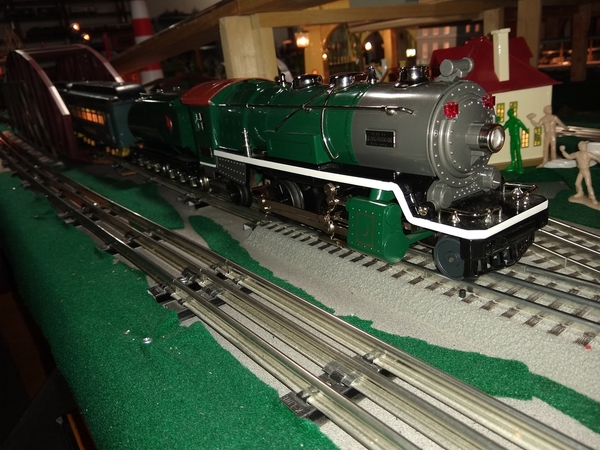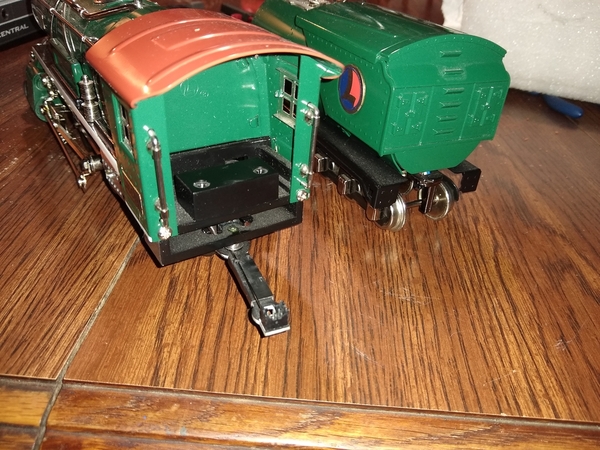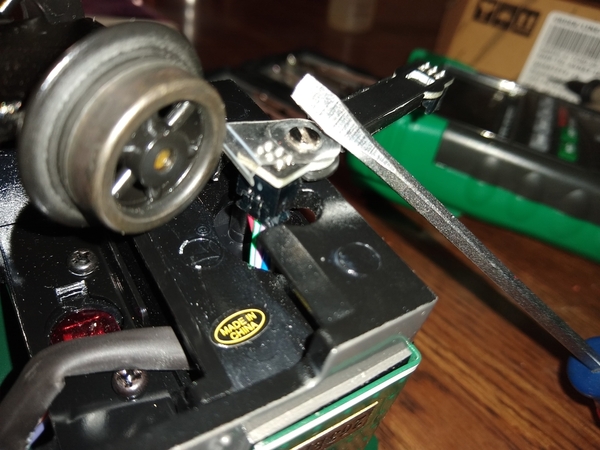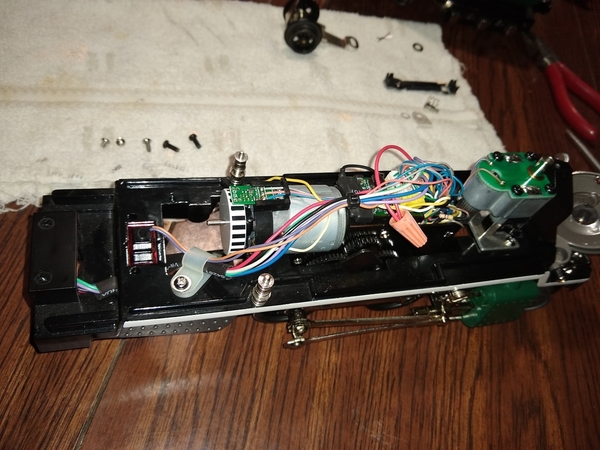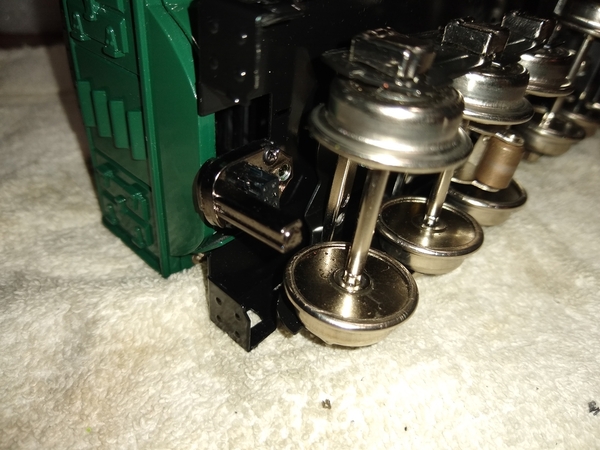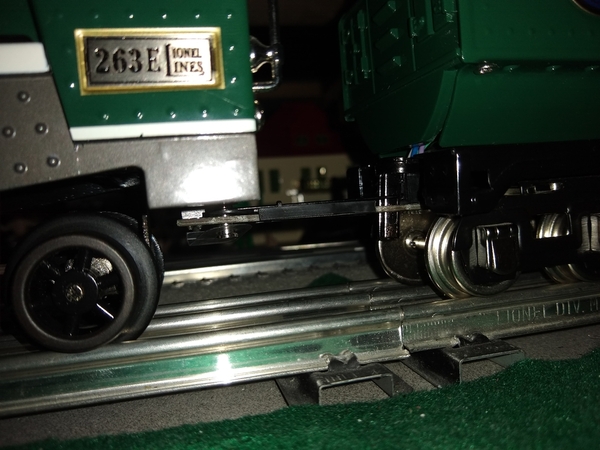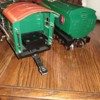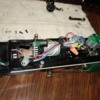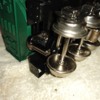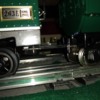The fall chores are wrapping up, the wood stove is glowing and I'm heading back into the Train Room to work on more projects. Today's endeavor was to tinker with a locomotive problem that's been aggravating me for years: the ornery wireless drawbar on my MTH PS3 263e.
I figured out a while ago that the wireless drawbar-- a little circuit board with a Molex connector on each end, tying the motor in the engine to the command boards in the tether-- was popping free on one end or the other while the locomotive was on the track. This happened only occasionally when the engine was new, but for the past several years it has been so chronic that I have hardly been able to run the locomotive at all. I am very fond of this engine and really wanted it operational for this year's holiday party, so I began a thorough investigation to try and resolve the problem.
I set the engine upside in my cradle and played with the drawbar for a while. I discovered that the wire harness going to the drawbar had very little slack on it, so the connector tended to get tugged apart if the drawbar got pulled up or down too far. Tightening the screw holding the drawbar helped somewhat, but the harness was still so short that it made the drawbar hard to swing from one side to the other.
I removed the engine's boiler so I could tease some slack out of the wire harnesses. You can see the wire clip at bottom left, just above where the wires make an S-bend going out to the tether. I strategically cut a tie wrap and fed about 1/2" of extra wire through, giving enough slack so that the drawbar could swing freely from one side to the other. I made sure that the wires weren't touching the flywheel or getting pinched as I reassembled the locomotive.
With the cab end dealt with, it was time to turn my attention to the tender. I had observed in my experimentation that the tender's post assembly was so inflexible that it was pulling UP on the tender end, forcing the locomotive end DOWN and forcing one connector or the other to pop out. I opened the tender up and loosened the screw holding the post assembly by two turns so that the post assembly can flop up and down a little. I forgot to take photos while I had the tender open, but you can see the bottom side of the post assembly in this image.
Finally, with the locomotive end of the drawbar tightened up and the tender end loosened, the drawbar is floating at a slight downwards angle. Both connectors are snapped in and their harnesses have ample slack in the nuetral position. As the locomotive goes over grades and around corners on the layout, the drawbar is able to sway around without either connector popping free.
Today I coupled up some of my favorite prewar coaches and sent the engine out for a nice long run. After a thorough, 30-minute trial at slow, moderate and high speeds over both mainlines on the layout, I am finally satisfied with how nicely this engine runs. The Crescent Limited has traction tires and a can motor so it pulls those 700-series cars like a champ. Time for a victory lap!




